A nightly spectacle plays out in the marsh with hundreds of bugling birds
Published in Outdoors
GRANTSBURG, Wis. — Sandhill cranes came in by the dozens, and then dozens more, to the grassy marsh of Crex Meadows Wildlife Area. They had spent the day feeding in nearby fields and now were arriving in large numbers at a favored roosting spot.
They announced themselves with nasally, bugling bursts, outnumbering about 40 people gathered on the road last Wednesday evening to watch and listen.
“They are so ungainly, so funny-looking, and yet still so beautiful,” said Julie Staub, who was there to watch and photograph with her sister, both of Marine on St. Croix, Minn., and avid birders.
As if on the clock, the sandhills arrive daily and increase beginning in early October. Depending on weather, they peak in number at the end of this month or in early November. Then, they’ll continue their long journey south to winter after producing a spectacle and sensory experience that still lights up bird lovers. The cranes also are bringing newcomers under their spell.
The nightly ritual at Crex is evidence of a conservation success story that rescued sandhill cranes from near extinction.
Last Wednesday, the spectators stood on an interior road straddling a Crex marsh where the cranes land and sit tight for the night. Some people were with employees from the International Crane Foundation, based in Baraboo, Wis., who were in town to partner with the Crex Meadows Wildlife Area visitor center for a guided tour. It sold out.
The cranes delivered for their audience. As Staub described, they were like marionettes, as if pulled by strings, as they floated in and dropped onto sandy platforms or straight into water.
Larry Hollar of Inver Grove Heights was present with his camera and tripod, part of a now-common routine in fall. He was spending the night in Siren, Wis., so he could get back to Crex before dawn to watch the birds launch.
The retiree likes to introduce new people to Crex, bringing up vanloads of newcomers.
While talking to a visitor about the birds’ “gabbling and grace,” cranes continued to spread their wings and glide in.
Hollar lit up. “That’s it right there. It’s great.”
All the while the sandhills sounded like a horn section trying to get in tune. The chilly, gusty air carried their calls, one layered on another, or sometimes in unison.
Birds, grasses, water, people — all were tinted in yellows and pinks in the sun’s fading light. A crane foundation employee estimated that about 1,500 sandhills had settled in. At first light, they would lift off to feed once again.
‘Intelligent, resilient, adaptable’
The cranes stand out for their resilience as much as their cinnamon plumage and red crowns.
The sandhills, native to Wisconsin and Minnesota, were nearly hunted to extinction in both states in the 1800s. Also, wetlands were drained and prairies plowed to use the land for agriculture. By the 1940s, fewer than 50 cranes remained in a bog near Roseau, Minn., according to the Department of Natural Resources.
Habitat restoration and state and federal protections have helped the bird rebound. They’re also survivors and considered one of oldest living birds. According to the Audubon Society, fossils of cranes have been found in North America that are 2.5 million years old.
“They’re very intelligent and good at figuring out how to be resilient and adaptable,” said David Wolfson, a waterfowl researcher who, as part of a University of Minnesota study, tagged cranes and tracked their migration.
The birds that stop over at Crex are part of the eastern population of greater sandhill cranes that breed across the Upper Midwest and widely across Canada. The U.S. Fish & Wildlife Service counted more than 91,000 in a 2024 survey.
The birds are part of the same population that sweeps through Sherburne National Wildlife Refuge in Zimmerman, Minn., which has drawn more than 20,000 in fall and has hundreds of nesting pairs.
The federal government shutdown has changed the experience there so far. It has canceled the normal weekly crane counts and is affecting water management that attracts cranes to their usual roosting spots, said Dean Kleinhans, a member of the Friends of Sherburne National Wildlife Refuge. The St. Francis pool, for example, is low and the cranes aren’t landing.
Anne Lacy, the International Crane Foundation’s Eastern Flyway Programs director, said the birds will roost on land as a last resort or decide to move on. “They know there is more water down the flyway.”
Kleinhans is disappointed about not participating in the counts and the data they supply. There is wide interest, he said, and “they give the public a sense of what’s happening with habitat.”
Waiting for peak
Back at Crex, the sandhill crane numbers will continue to build. Lauren Finch, a Wisconsin DNR natural resources educator, said they could reach a high mark by the end of October or first weeks of November.
“There will be 20,000 or upward at the peak if we hit it right,” she said.
The birds will leave Crex once the marshes freeze over during the day. The eastern population will scatter for wintering grounds. Some will anchor in Florida or other Gulf states, while other birds might hole up as close as southern Indiana.
Like some other waterfowl, the birds return annually to the places they first migrated as juveniles with their parents, the waterfowl researcher Wolfson said.
Finch said the only behavior change they see is when Crex flowage water levels are altered by, for example, drought or wetland management.
Julie Staub said the refuge’s mix of wetlands and brush prairie over 30,000 acres are a restoration success, too.
“Look what can happen with some stewardship, understanding and strategy,” she said, while nearby sandhills communicated with another call, a soft purr. “Nature meets us halfway. We just have to make an effort in the right direction and leave nature to do what it does best.”
____
©2025 The Minnesota Star Tribune. Visit at startribune.com. Distributed by Tribune Content Agency, LLC.
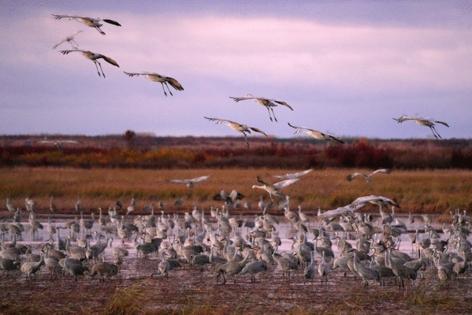
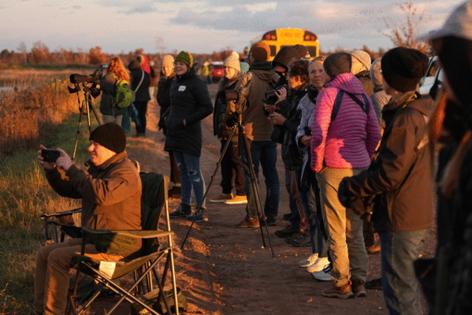
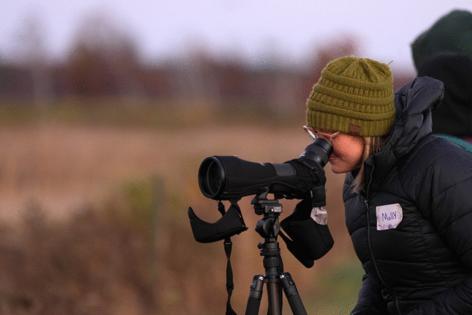
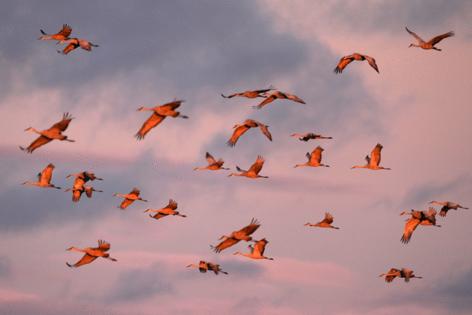
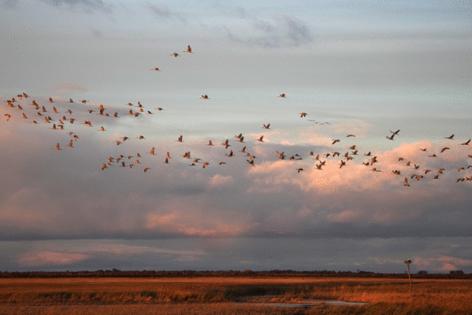











Comments